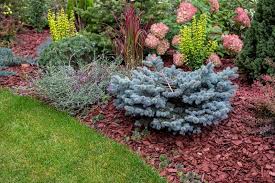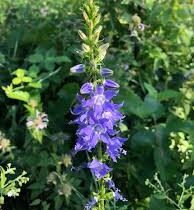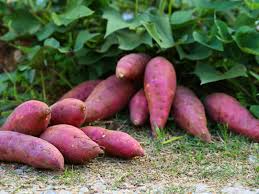As Gardening in october unfolds, the garden transitions into a quieter, yet still vibrant, phase. The air turns crisp, and the days shorten, signaling the approach of winter. This month is filled with opportunities for gardeners to prepare their outdoor spaces for the colder months ahead while still enjoying the beauty of fall. Here’s an extensive guide on what to focus on in your garden throughout October.
Planting Trees and Shrubs
One of the most beneficial tasks you can undertake in October is planting trees and shrubs. The cooler weather combined with the often abundant rainfall creates the perfect environment for establishing new plants.
Advantages of Fall Planting
When planted in October, trees and shrubs have a chance to develop their root systems before winter arrives, which can lead to stronger growth and resilience in the spring.
Best Practices for Planting Trees and Shrubs
- Timing is Essential: Aim to plant early in the month to give the roots ample time to establish before the ground freezes.
- Site Selection and Preparation: Choose a location with suitable sunlight and drainage. Clear the area of any weeds, rocks, and debris. Dig a hole that is at least twice the width of the root ball for optimal growth.
- Watering After Planting: Water the newly planted trees and shrubs thoroughly to help settle the soil around the roots and ensure moisture retention.
Choosing the Right Varieties
Selecting the appropriate species for your climate and garden conditions is crucial for long-term success.
Factors to Consider
- Native Species: Opt for native trees and shrubs, as they are better adapted to local conditions and typically require less maintenance.
- Mature Size: Consider the mature height and spread of the plants to ensure they have enough space to grow without overcrowding.
Restoring Your Garden from Summer’s Effects
The effects of summer can leave gardens looking worn and depleted. October is an excellent time to assess the damage and make necessary repairs.
Evaluating Plant Health
Take a close look at your plants to identify any issues such as pests, diseases, or stress from high temperatures.
Steps for Restoration
- Remove Dead or Damaged Plants: Clear out any dead or unhealthy plants to prevent disease spread and create space for new growth.
- Soil Amendments: Add compost or organic matter to replenish nutrients and improve soil structure.
- Reseeding Lawns: If your lawn has suffered, consider reseeding bare patches to encourage lush new growth.
Incorporate Autumn Annuals
Adding autumn annuals to your garden can provide vibrant color as the season transitions. These plants thrive in cooler temperatures and can brighten your landscape.
Selecting Autumn Annuals
Consider planting varieties such as pansies, snapdragons, and ornamental cabbage. These plants not only add color but also enhance your garden’s aesthetic during the fall months.
Planting Tips for Autumn Annuals
- Choose Hardy Varieties: Select annuals that can withstand cooler temperatures and even light frosts.
- Creative Combinations: Mix different colors and textures to create stunning displays in garden beds or containers.
- Watering Needs: Ensure these plants receive adequate water, especially during dry spells.
Planting Bulbs for Spring Blooms
October is the perfect time to plant spring-flowering bulbs like tulips, daffodils, and hyacinths. These bulbs will lie dormant through winter and bloom beautifully when spring arrives.
Planning for Future Blooms
Planting bulbs now allows them to establish roots before the ground freezes, leading to vibrant flowers in spring.
Bulb Planting Best Practices
- Quality of Bulbs: Choose firm, healthy bulbs from a reputable source for the best chance of successful blooms.
- Depth and Spacing: Generally, bulbs should be planted at a depth of two to three times their height. Space them appropriately according to the variety to ensure healthy growth.
- Pointed Side Up: When planting, remember to place bulbs with the pointed end facing up for proper growth.
Transitioning Citrus and Tropical Plants Indoors
As temperatures drop, it’s time to bring your citrus and tropical plants indoors to protect them from frost damage.
Preparing for Indoor Moves
Before moving plants indoors, it’s essential to check them for pests and ensure they are healthy.
Tips for a Smooth Transition
- Thorough Inspection: Carefully examine your plants for any signs of pests. Treat infestations before bringing them inside to avoid spreading any issues.
- Gradual Acclimatization: Gradually acclimate your plants to indoor conditions by placing them in a shaded area for a few days before moving them indoors.
- Optimal Placement: Position plants near bright windows where they can receive adequate sunlight during the shorter days ahead.
Pruning Perennials for Healthy Growth
October is an excellent time to prune perennials, especially those that have finished blooming. Proper pruning helps prepare plants for winter and encourages healthy growth in the spring.
Understanding Pruning Techniques
Timing and technique are crucial for effective pruning.
Pruning Guidelines
- Remove Dead or Diseased Growth: Cut away any dead or diseased stems to promote overall plant health and vitality.
- Shaping Plants: Prune to shape the plants and encourage bushier growth in the spring. This can also enhance airflow and reduce disease risk.
- Leave Healthy Foliage: Avoid cutting back all foliage, as some plants benefit from remaining leaves that can provide protection against winter elements.
Deep Irrigation: Ensuring Adequate Moisture
As the weather cools, many gardeners forget about watering, but it’s still essential to ensure that plants receive adequate moisture, particularly newly planted ones.
Importance of Deep Watering
Deep irrigation encourages roots to grow deeper into the soil, helping plants become more resilient as winter approaches.
Effective Watering Techniques
- Water Deeply and Infrequently: Focus on deep watering rather than frequent shallow watering. This encourages strong root systems.
- Timing of Watering: Water early in the morning to minimize evaporation and give plants time to absorb moisture throughout the day.
- Soil Moisture Monitoring: Regularly assess the moisture level by inserting your finger into the soil. If the top inch feels dry, it’s time to water.
Clean Up Debris and Dry Leaves
As autumn progresses, leaves begin to fall, making it crucial to clean up debris from your garden. This task helps prevent diseases and pests from overwintering in your garden.
Benefits of Garden Cleanup
Cleaning up leaves and debris reduces the risk of fungal diseases and keeps your garden looking tidy.
Cleanup Strategies
- Rake Regularly: Rake up fallen leaves and debris to prevent buildup, which can harbor pests and diseases.
- Composting Healthy Material: Use healthy leaves and plant material in your compost pile to recycle nutrients back into your garden.
- Dispose of Diseased Material: Throw away any diseased plant material to prevent the spread of disease in your garden.
Considerations for Warmer Climates
For those living in warmer zones, October can still be a productive month. Your gardening tasks may differ from those in cooler climates, allowing for continued growth and planting.
Adjusting Your Gardening Routine
Warmer regions may allow for the planting of both cool-season crops and fall flowers.
Gardening Tips for Warmer Zones
- Plant Cool-Season Crops: Consider planting cool-season vegetables such as broccoli, spinach, and kale, which thrive in cooler temperatures.
- Extending the Growing Season: Use row covers or cold frames to protect plants and extend the growing season into the winter months.
- Water Management: As temperatures may still be warm, ensure plants receive adequate water and are not stressed by heat.
Preparing for Winter: Additional Tasks
As October progresses, it’s vital to prepare your garden for the upcoming winter months. This involves a range of tasks that can help ensure a healthy start in spring.
Mulching for Protection
Applying mulch is a great way to protect your plants from the harsh winter conditions.
Benefits of Mulching
- Insulation: Mulch provides insulation for plant roots, helping to moderate soil temperatures.
- Moisture Retention: It helps retain moisture in the soil, reducing the need for watering during dry winter spells.
- Weed Suppression: A thick layer of mulch can suppress weed growth, making spring maintenance easier.
Checking Garden Tools
As the gardening season winds down, it’s a good time to clean and maintain your tools. Proper care extends their lifespan and ensures they’re ready for use in the spring.
Essential Tool Care Tips
- Cleaning: After a season of use, clean your tools thoroughly to remove dirt, rust, and plant residues.
- Sharpening Blades: Sharpen the blades of pruners, shears, and hoes to make cutting easier and more efficient.
- Storage: Store tools in a dry, sheltered location to prevent rusting and damage during winter.
Reflecting on the Gardening Season
As October draws to a close, take time to reflect on your gardening experiences over the past season. Evaluating your successes and challenges can provide valuable insights for future gardening endeavors.
Keeping a Gardening Journal
Consider maintaining a gardening journal to document your experiences, successes, and lessons learned throughout the season.
Benefits of Journaling
- Track Growth Patterns: Use your journal to record when plants bloom, when you harvested, and any pest issues encountered.
- Setting Goals: Based on your reflections, set goals for the upcoming seasons to improve your gardening practices and knowledge.
Final Thoughts
October is a crucial month for gardeners, filled with essential tasks that set the stage for a successful and vibrant garden. From planting and cleanup to reflection and preparation, every action contributes to the health and beauty of your outdoor space. Embrace the opportunities that October presents, and enjoy the rich rewards of your gardening efforts!








Leave a Reply
View Comments